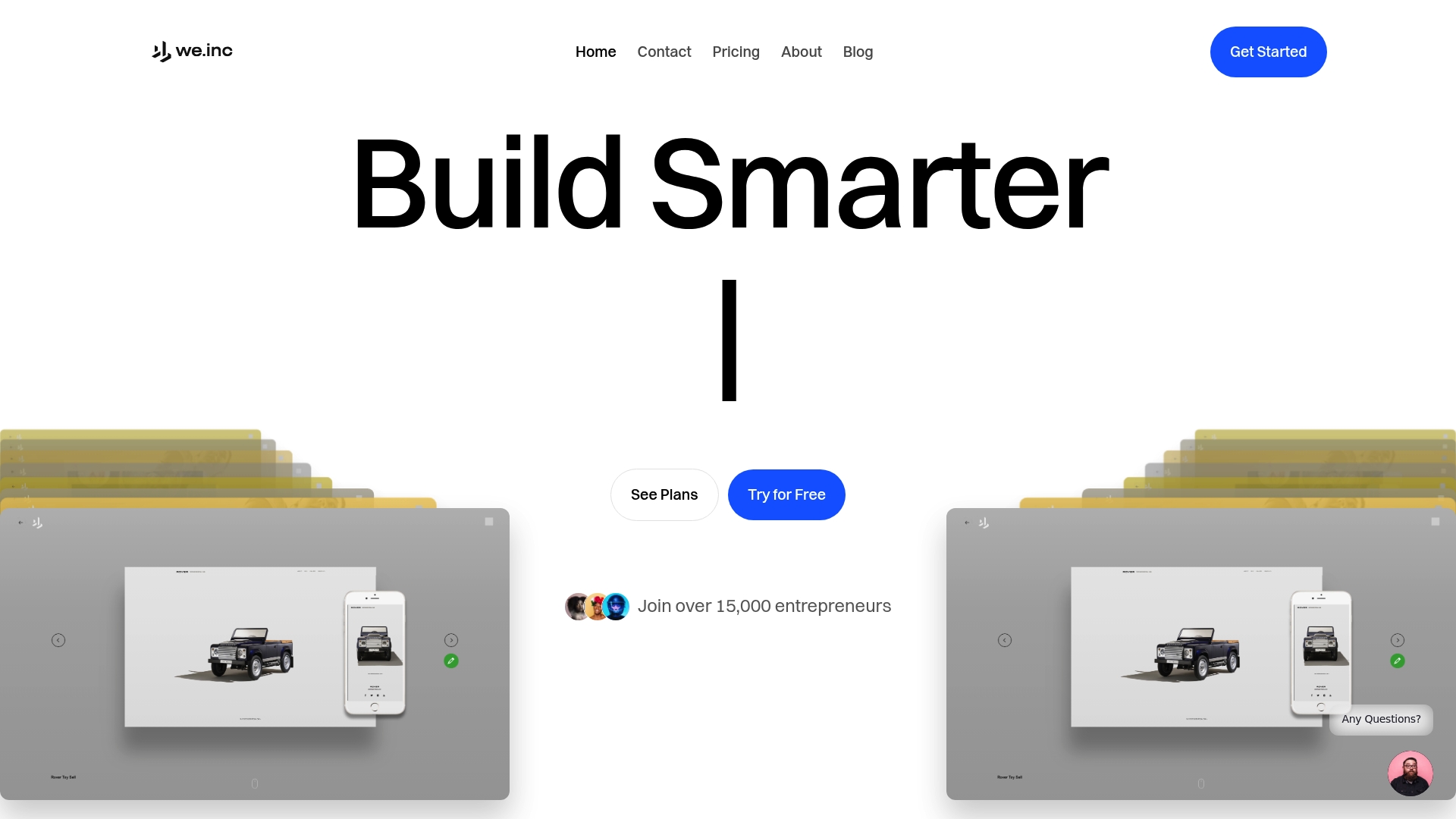Step by Step Website Launch Guide for Entrepreneurs

Did you know that about 75 percent of consumers judge a company’s credibility based on its website design? Launching a site that truly delivers goes far beyond picking a template or plugging in your logo. Each phase of a website launch, from goal setting to final testing, shapes how visitors see your brand and if they trust your business. Learning to plan with intention brings clarity, saves time, and leads to a site that stands out in a crowded market.
Quick Summary
Key PointExplanation1. Define clear project goals.Establish specific objectives that guide the website development process.2. Customize brand identity effectively.Use consistent visuals and messaging to reflect your brand personality throughout the website.3. Implement smart automation tools.Integrate essential applications to streamline workflows and enhance website functionality without extensive coding.4. Create a strategic content plan.Develop a content calendar to generate pre-launch buzz and effectively distribute engaging materials.5. Thoroughly verify before launching.Conduct cross-device and functionality testing to ensure a seamless user experience and optimal performance.
Table of Contents
Step 1: Define project goals and structure
Launching a successful website starts with crystal clear project goals. Think of this step like creating a roadmap that guides every decision you’ll make. Your goal is to develop a structured framework that transforms your vision from an abstract idea into a concrete plan.When establishing your project goals, start by defining your core mission. According to research from startup methodology frameworks, this means identifying your target customer personas and clarifying your unique value proposition. Who exactly are you building this website for? What specific problem will you solve for them? Break down your goals into a hierarchical structure that connects your overarching mission to specific product specifications. As research on goals breakdown structures indicates, this approach provides critical clarity and traceability during your website development process. Your hierarchy might look like this:- Overall Business Mission- Strategic Objectives - Specific Website Goals- Detailed Product RequirementsConsider your messaging hierarchy and communication channels as part of this planning. What tone will your website use? Which platforms will you leverage to reach your audience? These decisions form the foundation of your project structure.> Pro Tip: Be as specific as possible when defining goals. Vague objectives lead to unclear outcomes.Your next step will involve translating these strategic goals into actionable design and development requirements. By establishing a clear goals breakdown structure now, you create a roadmap that keeps your entire website launch process focused and intentional.In the upcoming section, you’ll learn how to transform these strategic goals into concrete technical specifications that your design and development team can execute with precision.
Step 2: Customize your website and branding
Now that you have your project goals mapped out, it is time to bring your brand to life through your website design. According to research from branding experts, effective website customization means expressing a clear purpose while creating a visually consistent experience that tells your unique story.
Start by defining your brand values and core visual identity. What colors, fonts, and imagery truly represent your business personality? As research from website branding tips indicates, you will want to develop a limited color palette that feels professional and memorable. Select 2-3 primary colors that complement each other and reflect your brand mood.
Your logo serves as the visual anchor for your entire brand. Make sure it communicates your business essence at a glance. Research suggests including a signature font and memorable tagline that reinforces your brand message. Think about how each visual element works together to create a cohesive narrative.

Pro Tip: Consistency is key. Ensure your brand voice sounds the same whether someone reads your homepage, about page, or product descriptions.
Consider how your layout and design elements support your brand story. Each page should feel connected through consistent typography, color usage, and visual style. This creates a professional impression that helps potential customers trust your brand.
As you customize your website, remember that branding goes beyond just looks. Your tone of voice and messaging should feel authentic and aligned with your target audience. Speak directly to their needs and aspirations.
In the next section, you will learn how to select the right website template and customize it to match your brand identity perfectly.
Step 3: Configure automation and integrations
With your branding established, it is time to supercharge your website with smart automation and powerful integrations. This step transforms your website from a static online presence into a dynamic business engine that works for you around the clock.
Start by identifying the key business processes you want to automate. According to research on integration platforms, entrepreneurs can now connect multiple web applications through no code workflow solutions. As insights from Zapier research indicate, you can integrate everything from email marketing to customer relationship management across an impressive network of approximately 8,000 applications.
Think strategically about which tools will streamline your workflow. Look for platforms that offer drag and drop interfaces and API based connectors. These solutions allow you to create seamless connections between your website forms, email systems, payment processors, and customer communication channels without requiring advanced technical skills.
Pro Tip: Always test your automation workflows thoroughly before going live. Small configuration errors can create unexpected bottlenecks in your business processes.
Consider your specific business needs when selecting integrations. Do you need automated customer follow ups? Want to synchronize lead information across platforms? Modern integration tools make these complex tasks surprisingly simple. You can set up triggers that automatically move customer data between your website contact forms and your CRM system or generate personalized email sequences based on specific user interactions.
The most powerful integrations feel invisible to your customers while dramatically improving your backend efficiency. Your goal is creating a smooth user experience that simultaneously reduces your manual workload.
In the next section, you will learn how to set up tracking and analytics to measure the performance of your newly automated website systems.
Step 5: Verify, test, and launch your site
You are in the final stretch of your website launch journey. This critical phase separates successful websites from amateur projects by ensuring every element functions perfectly before going live. Think of this step like a pre-flight checklist for your digital business vehicle.
Start with comprehensive cross device testing. Open your website on smartphones, tablets, laptops, and different web browsers. Verify that your design looks crisp and functions smoothly across all screen sizes. Check that buttons click correctly, forms submit without errors, and images load quickly. Pay special attention to mobile responsiveness, as over 60% of web traffic now comes from mobile devices.
Next, conduct thorough functionality testing. Click through every page and interaction pathway. Test your contact forms, email signup processes, payment gateways, and any interactive elements. Simulate user journeys from multiple perspectives. Imagine yourself as a potential customer navigating your site for the first time.
Pro Tip: Ask friends or colleagues to perform blind usability tests. Fresh eyes often catch issues you might have overlooked.
Perform critical performance checks. Use free online tools to analyze your website loading speed, SEO readiness, and overall technical health. Websites that load in under three seconds retain significantly more visitors. Optimize image sizes, minimize complex scripts, and ensure your hosting can handle expected traffic.

Before launching, create a backup of your entire website. This provides a safety net in case you need to quickly revert changes or recover from unexpected technical issues. Consider setting up website monitoring tools that can alert you to any downtime or performance problems.
In the final step, you will learn how to announce your website launch and start attracting your first customers.
Here’s a summary of each step in the website launch process:
StepMain FocusKey Actions1Define Goals & StructureSet mission
Identify target users
Create hierarchy2Customize Website & BrandingChoose visuals
Design logo
Establish brand voice3Configure AutomationConnect integrations
Automate workflows
Test systems4Schedule Content & Connect ChannelsPlan calendar
Choose platforms
Prep teaser content5Verify, Test & LaunchCross-device checks
Usability tests
Optimize speed
Stop Letting Website Launch Stress Hold You Back
You have just read how launching a website can feel overwhelming. Setting clear goals defining your brand developing content and making sure every technical detail works perfectly. It is easy to get stuck stressing over coding troubleshooting automations or managing endless tools when all you want is to win customers and grow your business.
At We.inc you do not have to face this alone. Entrepreneurs just like you trust our all-in-one platform to build beautiful high-converting websites with zero coding. You get integrated automation from AI chatbots to instant social scheduling so you can focus on what truly matters. No more wrestling with complex workflows or fragmented systems.

Ready to skip the overwhelm and launch with confidence? Try We.inc today to experience rapid setup brilliant automation and a digital toolkit that turns your entrepreneurial vision into results. Join now and let your website launch become your unfair advantage.
Frequently Asked Questions
What are the first steps to define my project goals for launching a website?
Start by establishing your core mission and identifying your target customer personas. Next, break down your goals into a clear hierarchy that connects your overall mission to specific website goals and product requirements.
How can I effectively customize my website and branding?
Define your brand values and visual identity by selecting a color palette and imagery that reflects your business. Ensure that your logo and other visual elements consistently convey your brand message across all pages.
What should I consider when configuring automation and integrations for my website?
Identify key business processes to automate, such as customer follow-ups and lead data synchronization. Choose user-friendly platforms that connect your website with necessary applications, streamlining your workflows without needing advanced technical skills.
How can I create a content plan that effectively attracts my target audience before my website launch?
Develop a comprehensive content calendar that outlines your primary distribution channels, like blogs and social media. Include teaser content to build anticipation, and engage your audience with a mix of valuable insights and interactive elements.
What are the critical tests I need to perform before launching my website?
Conduct cross-device testing to ensure your site functions well on smartphones, tablets, and desktops. Perform usability tests on all interactive elements and check website performance for speed and technical health, aiming for a loading time under three seconds.
How do I prepare for my official website launch?
Create a backup of your website and set up performance monitoring tools to catch any issues post-launch. Finally, plan a launch announcement strategy to attract your first customers and generate immediate interest.
%20(1).svg)

